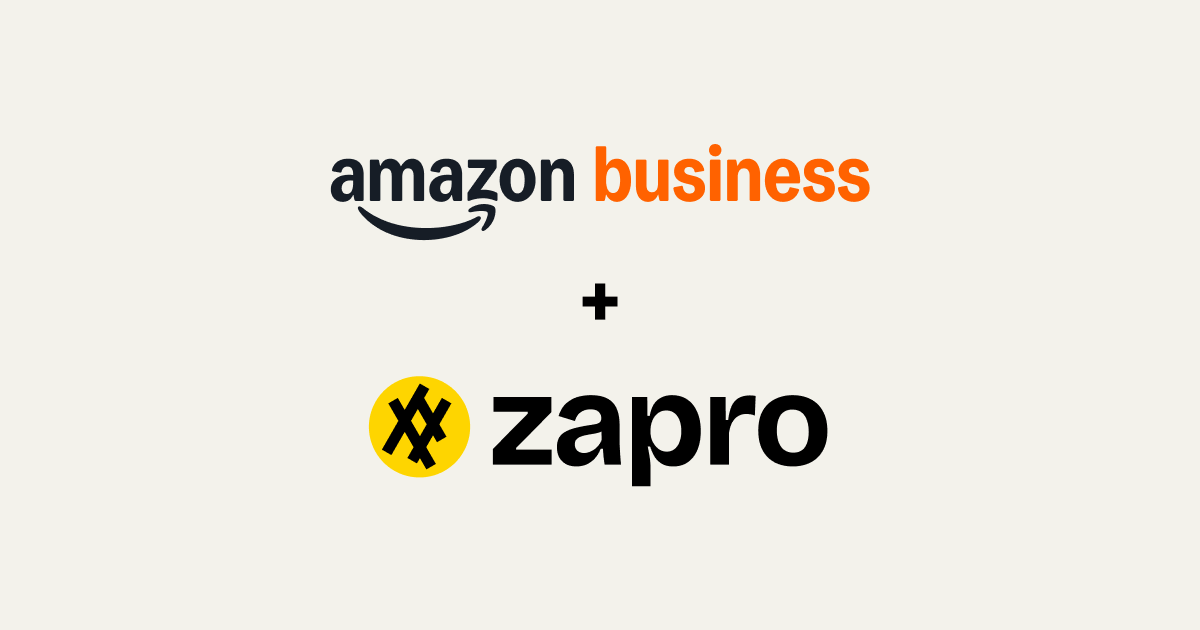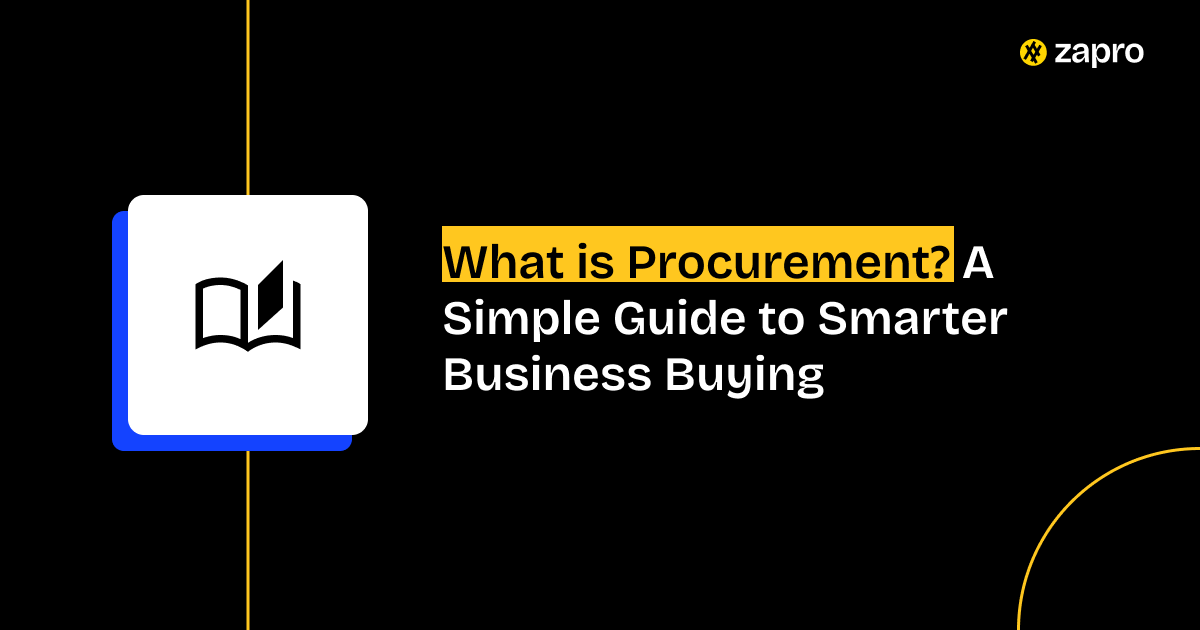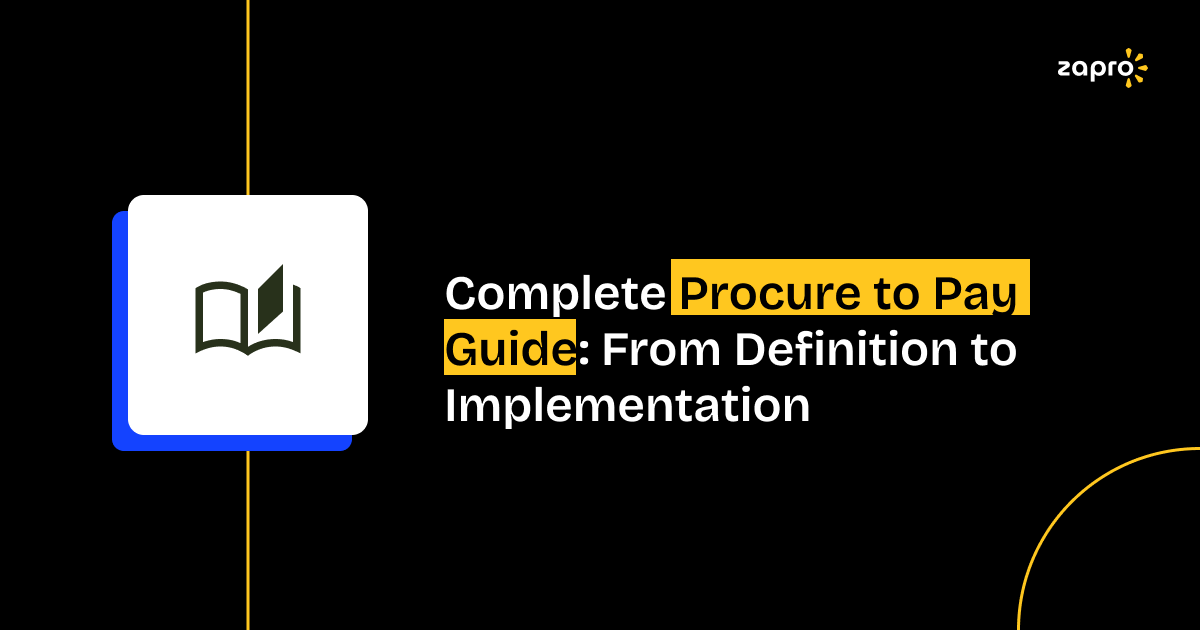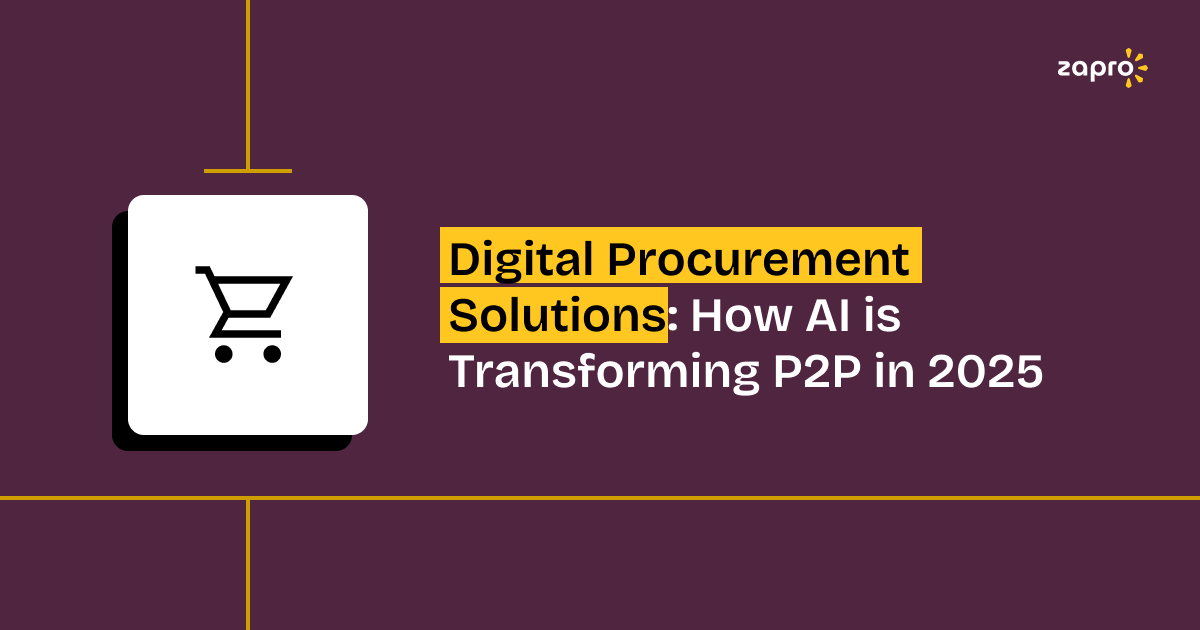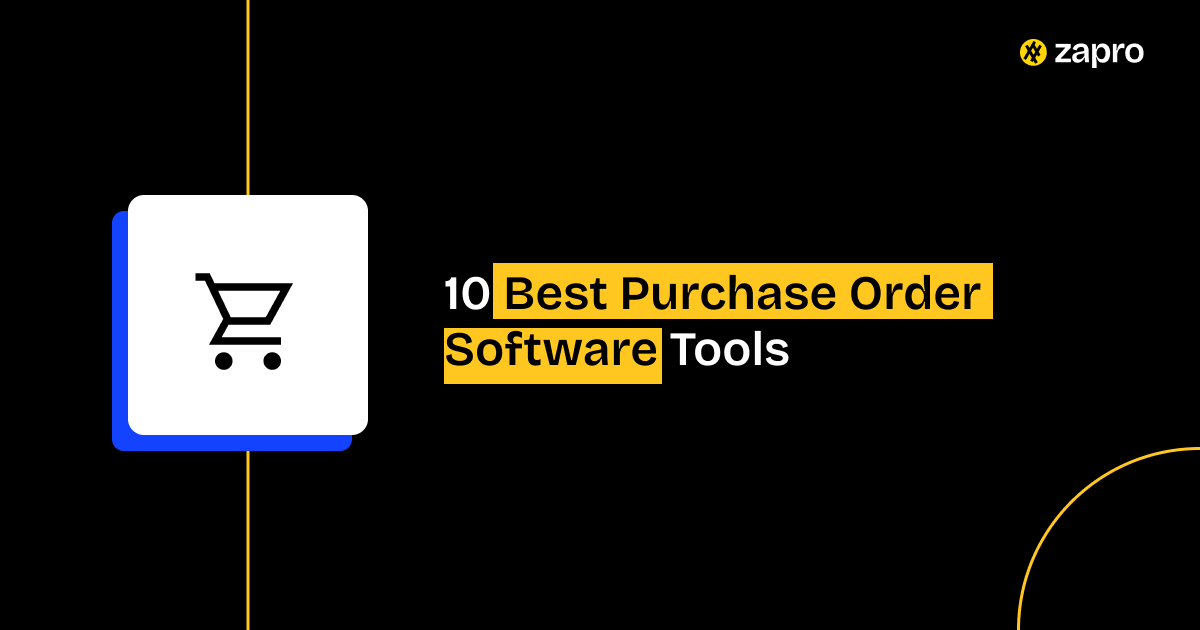What is procurement?
Procurement is the complete process of getting goods and services that organizations need for their operations. This strategic business function includes identifying requirements, selecting suppliers, negotiating contracts, creating purchase orders, receiving goods, and approving supplier payments. Companies use this procurement process to get necessary resources at the best possible price while balancing factors like quality, quantity, time, and location.
Procurement definition goes beyond simply buying products; it represents a more strategic approach compared to purchasing, which is purely transactional. Purchasing focuses on ordering and payment transactions. The procurement process takes a broader view that has supplier selection, relationship management, and business objective alignment. To put it simply, purchasing is one part of the overall procurement management function.
The procurement meaning in business covers several critical purposes:
- Making sure necessary resources are available when needed
- Getting competitive prices to maximize value
- Building reliable supplier relationships
- Supporting business efficiency and profitability
- Managing risk in the supply chain
Procurement departments cooperate with internal stakeholders to gather requirements and forecasts. They then source the best suppliers at optimal costs. This function handles more than half of a typical company’s total budget. The average procurement function manages 60.6% of total enterprise spend.
Procurement takes different forms based on organizational needs. Direct procurement involves getting materials and components that go directly into a company’s end products. Manufacturing or operational teams typically manage this process. Indirect procurement deals with getting goods and services needed for daily operations but not directly used in final products. These include office supplies, consulting services, and maintenance equipment.
Procurement has grown from a simple record-keeping task into a sophisticated discipline that needs strategic thinking and negotiation skills. The Industrial Revolution made it more important as manufacturing operations needed efficient material sourcing and transport. By the mid-20th century, people recognized procurement as a management function rather than just a clerical one.
The modern business environment presents multiple challenges beyond cost control. These include supply chain resilience, sustainability requirements, and expanding regulatory compliance. So, the chief procurement officer’s role has changed from a back-office position focused mainly on cost reduction to a vital strategic role.
Good procurement brings significant financial benefits. Businesses can and generate 2-3% in additional annual savings reduce their purchasing cost base by 8-12%. The average procurement department achieves an annual saving of 6.7% in its latest reporting cycle.
Learn more about DualEntry Alternative.
Why is procurement important in business?
If you’ve ever wondered, “what is procurement in business?” The answer is simple: Procurement stands as the life-blood of business success in today’s competitive market. It goes way beyond the reach and influence of simple purchasing to substantially contribute to an organization’s financial health, operational efficiency, and long-term sustainability.
1. Financial Impact and Cost Reduction
Procurement drives financial performance through cost savings. Good procurement strategies can create 2-3% in additional annual savings and reduce a company’s purchasing cost base by 8-12%. These savings directly affect profitability and cash flow, which shows up in all three core financial statements: income statement, balance sheet, and cash flow statement. Procurement management achieves an average annual saving of 6.7% in their last coverage cycle.
Research reveals that procurement makes up more than 20% of the total financial effect in a transformation program. Companies that meet their procurement savings targets are nearly twice as likely to reach their business-wide savings targets.
2. Risk Management and Supply Chain Resilience
The procurement process takes on a significant role to identify and reduce supply chain risks. Businesses can spot potential problems early through supplier evaluations. Capgemini’s research shows that , with many problems being supply chain-related, over 80% of companies faced significant obstacles during the pandemic. Procurement professionals now use a “just-in-case” approach to broaden their supplier base, create backup plans, and track performance to improve resilience.
3. Supplier Relationships and Strategic Value
Strong supplier relationships promote collaboration and new ideas. Procurement builds these strategic collaborations through timely payments, meeting deadlines, getting feedback, handling conflicts professionally, and keeping communication clear. About 70% of procurement professionals see stronger supplier collaboration as their main reason to digitize operations.
4. Business Efficiency and Productivity
Using consistent procurement process creates several operational benefits:
- Better reliability and consistency in purchasing responsibilities
- Boosted time management through automation of key tasks
- Clear communication about inventory and supply needs
- Quick spotting of waste and inefficiencies
- Higher productivity as teams concentrate on core responsibilities
5. Strategic Business Alignment
Procurement has grown from a back-office function into a strategic force for business success. It lines up sourcing practices with overall organizational goals. This strategic fit helps procurement lead corporate social responsibility initiatives, including diversity and inclusion by actively seeking diverse suppliers.
6. Sustainability and Social Responsibility
Today’s procurement affects environmental and social outcomes. Gartner’s 2022 research shows that 75% of procurement leaders plan to substantially increase their use of diverse suppliers. McKinsey & Company’s analysis reveals that top socially responsible performers grow 10-20% faster and earn higher valuations than their competitors, while strong socially responsible practices reduce costs by 5-10%.
Procurement’s role has changed fundamentally—it works not just as a cost center but as a strategic tool for growth. Procurement departments help businesses direct through complex market challenges and build lasting competitive advantages by focusing on quality, reliability, and strategic value alongside cost.
Learn more about What are supply chain and procurement?
Types of procurement explained
Most procurement operations fit into four main categories. Each category comes with its own characteristics, challenges, and strategic needs.
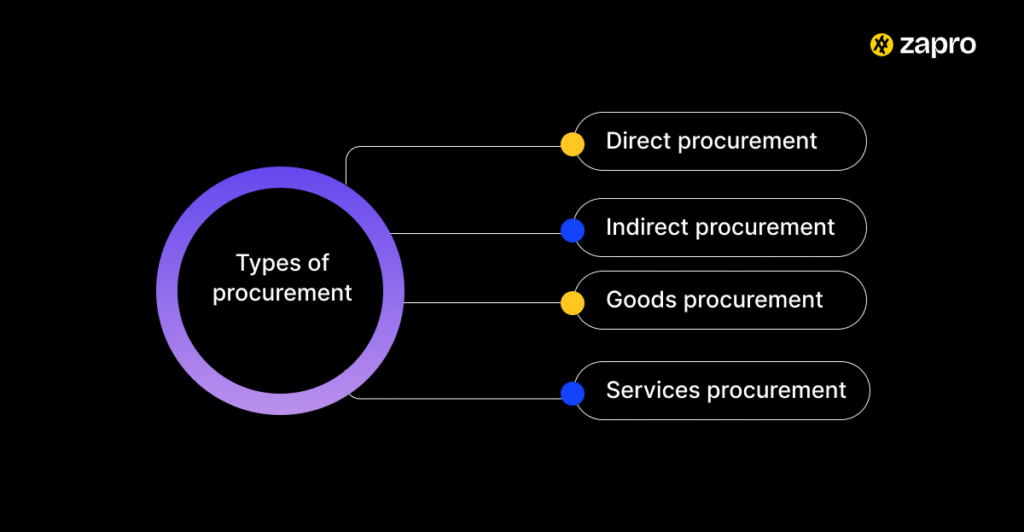
Direct procurement
Direct procurement gets materials, components, and labor that go straight into making a company’s products or services. These supplies feed the production line and directly shape the quality of final products for customers. To cite an instance, a car manufacturer buying steel and tires shows direct procurement in action.
The business can’t run without direct procurement. Supply disruptions can stop production and hurt sales and profits. Direct procurement usually needs bigger budgets and longer contracts than other types. The process must line up with production schedules and market demand, so careful planning is crucial.
Supplier relationships in direct procurement focus on building long-term partnerships that guarantee quality and reliable supply. These partnerships create stability for both buyers and suppliers.
Indirect procurement
Indirect procurement covers buying goods and services that keep daily operations running but don’t go directly into making the company’s main products. This includes maintenance items, IT services, software subscriptions, marketing, real estate, and outside professional help.
While indirect procurement might not immediately affect operations, it still plays a big role in the company’s overall health. The numbers show that indirect procurement can take up about 40% of what a company spends. Unlike direct procurement, indirect spending happens in smaller, changing amounts with shorter contracts.
Over the last several years, indirect procurement has changed a lot. Companies still need basic services like cleaning and office supplies, but they now spend much more on SaaS solutions, cybersecurity, and specialized software.
Learn more about direct vs indirect procurement.
Goods procurement
Goods procurement deals with buying physical items. This covers both direct materials that become part of finished products and indirect items that support operations . The list includes office equipment, computers, machinery, inventory items, and facility supplies.
Budget-friendly goods procurement focuses on quality control while avoiding supply problems. The buying process looks at product details, compares suppliers, negotiates prices, and handles delivery logistics.
Unlike services, goods can be stored, counted, and often resold. This physical nature makes quality checks and inventory management crucial parts of goods procurement strategies.
Services procurement
Services procurement brings in outside help from service providers. This includes project workers like consultants and specialty services from IT and marketing agencies to accounts payable, legal firms, facilities management, and other professional services.
Service providers work under Master Service Agreements (MSAs) with Statements of Work (SOWs) that spell out deliverables, timelines, and Service Level Agreements (SLAs). Services are harder to handle than goods because defining needs, checking quality, and measuring results isn’t as straightforward.
A well-run services procurement software system offers many benefits. Companies can save money through supplier negotiations and competitive bidding. They also get better service quality through performance tracking, improved workload management, stronger compliance, and access to industry best practices.
Most companies track and manage contingent labor costs separately from other services. This happens because of differences in how they pay, arrange work, deliver services, and the types of services provided.

By 2029, 80% of human decisions will be augmented by generative AI, transforming procurement operations.
– Gartner
The procurement process step-by-step
A procurement process works through connected steps that take organizations from spotting needs to making payments. This well-laid-out approach helps businesses get what they need quickly while managing to keep quality standards high.
1. Identifying needs
Organizations start their procurement process by spotting what goods or services they need. This first step helps cost control, budget adherence, and operational efficiency. Teams work with stakeholders to state exact technical specifications, materials, part numbers, or service features. These needs should come up during budget planning to make timely decisions that line up with financial plans. Teams must check existing supply sources, including mandatory contracts, and look at available options before they decide if competitive bidding makes sense.
2. Sourcing suppliers
Teams look for potential suppliers who can meet requirements once needs are clear. They typically:
- Send requests for proposals (RFPs) or quotes (RFQs) to shortlisted vendors
- Research markets to learn about supplier capabilities
- Check potential partners based on reputation, production capacity, communication, and quality
Strategic sourcing means more than listing companies that sell needed items. Teams analyze spending patterns, understand market forces, and build supplier relationships that match company goals. Good supplier sourcing balances costs with reliability, quality, and strategy.
3. Evaluating and selecting
Teams need clear criteria and transparent methods to evaluate suppliers properly. Most organizations use scoring systems that mix quality and quantity factors for fair vendor comparison. The process should check supplier profiles, licenses, certifications, and references. Companies usually get at least three quotes before deciding. Teams might visit facilities to check production processes and quality control after initial screening. Smart evaluation weighs current costs against future partnership value.
4. Negotiating and ordering
Contract terms cover pricing, delivery schedules, quality standards, and payment conditions after supplier selection. Good negotiation needs proper planning, clear goals, and knowing which points matter most. Procurement teams should set SMART goals (specific, measurable, achievable, relevant, time-bound) to guide talks. Purchase orders (POs) detail product specifications, quantities, prices, delivery times, and supplier contacts once terms are set. These binding documents need proper approvals and accounting details for tracking.
5. Receiving and inspecting
Teams check deliveries carefully against specifications and contract terms. Staff should:
- Check contract documents to verify delivery needs
- Look for shipping damage
- Make sure labels and packaging meet requirements
- Compare quantities with purchase orders and shipping papers
Technical checks should happen right after delivery to find defects before warranties run out. Staff must document all problems and tell suppliers quickly to fix issues . This step makes sure companies pay only for correct deliveries while keeping quality high.
6. Invoicing and payment
Payment processing marks the final step in procurement. Accounts teams match three things—the PO, receiving documents, and invoice to ensure everything lines up. This check stops payment for wrong or unauthorized invoices. Approved invoices trigger payment based on agreed terms. A clear payment process helps avoid late fees, captures early-payment discounts, and builds better supplier relationships. Teams should keep complete records for audits and spending analysis.
Transform Your Procurement Process with Ease

Procurement vs purchasing, sourcing, and supply chain
People often mix up procurement with purchasing, sourcing, and supply chain management – understanding “what is procurement” is important. These concepts are different in their scope, goals, and functions. When things go wrong in one area, it can create a ripple effect across others.
Procurement vs Purchasing
Purchasing is just one part of what procurement does. It deals with the basics – placing orders, paying bills, and getting items delivered. Simply put, purchasing happens after someone decides what needs to be bought.
Procurement takes a complete approach to getting goods and services. It goes beyond just buying things. The process involves picking suppliers, negotiating deals, and building relationships that last.
Key differences include:
- Scope: Purchasing takes care of daily buying while procurement handles everything from start to finish.
- Timeline: Purchasing happens in days or weeks but procurement can take months or even years
- Focus: Purchasing looks at costs and delivery dates while procurement creates lasting value
- Approach: Purchasing reacts to needs as they come up but procurement plans ahead with other departments
| Aspect | Procurement | Purchasing |
| Definition | A complete approach to acquiring goods and services, including supplier selection, negotiation, and long-term relationship building. | A subset of procurement that focuses only on placing orders, paying bills, and receiving goods or services. |
| Scope | Manages the entire lifecycle of vendor engagement—from identifying needs to supplier management. | Handles day-to-day buying activities after needs have been identified. |
| Timeline | Procurement can take months or even years depending on complexity. | Purchasing usually happens within days or weeks. |
| Focus | Creates lasting value by balancing cost, quality, and long-term supplier performance. | Primarily concerned with immediate costs and delivery timelines. |
| Approach | Strategic and forward-looking; plans ahead with other departments. | Tactical and reactive; responds to needs as they arise. |
Procurement vs Sourcing
Based on what they charge, how good their products are, and whether they deliver reliably. This helps build partnerships that work well for everyone.
Sourcing plays a crucial role early in the procurement process. Sourcing finds the right suppliers, and procurement manages everything else – from spotting needs to paying bills.
Here’s what makes them different:
- Main goal: Sourcing builds value over time while procurement keeps costs down right now
- Core work: Sourcing studies markets and grows supplier relationships while procurement buys things and manages vendors
- Time: Sourcing decisions shape relationships that last years while procurement deals happen much faster
| Aspect | Procurement | Sourcing |
| Definition | End-to-end process that manages everything from identifying needs to paying suppliers. | The process of finding, evaluating, and selecting the best suppliers. |
| Main Goal | Keeps costs under control and ensures overall procurement efficiency. | Builds long-term value by choosing reliable, competitive suppliers. |
| Core Work | Negotiates deals, issues purchase orders, and manages vendor relationships. | Studies markets, benchmarks suppliers, and develops partnerships. |
| Time Horizon | Deals often happen quickly once suppliers are chosen. | Decisions shape supplier relationships that can last for years. |
Procurement vs Supply Chain
Supply chain management arranges how goods and services move from suppliers to users. It watches over a product’s whole journey – from raw materials through making it to delivering it.
Procurement focuses on buying what’s needed. Supply chain teams make sure those purchases flow smoothly through production and delivery. Many companies keep these teams separate. This creates healthy competition and helps optimize operations.
They each have their own jobs:
- Responsibilities: Procurement picks suppliers and buys stuff while supply chain plans production, manages stock, and handles shipping.
- Focus areas: Procurement watches spending and supplier ties while supply chain keeps things moving quickly and reliably.
- Goals: Procurement wants good deals with less risk while supply chain aims for quick delivery and happy customers.
| Aspect | Procurement | Supply Chain |
| Definition | Focuses on buying goods and services that the organization needs. | Manages the full journey of goods/services, from raw materials to final delivery. |
| Responsibilities | Picks suppliers, negotiates contracts, and manages vendor risks. | Plans production, manages inventory, oversees logistics, and coordinates delivery. |
| Focus Areas | Spending, supplier performance, and contract compliance. | Efficiency, reliability, and speed of product flow through the system. |
| Goals | Achieve cost savings, reduce risk, and ensure supplier reliability. | Deliver products quickly, maintain stock levels, and maximize customer satisfaction. |
Trends shaping modern procurement
Procurement methods are changing rapidly. Several new trends are reshaping how companies buy goods and manage their supplier relationships. Therefore, the procurement definition gets slightly altered in different approaches, they are:
Sustainable procurement
Companies now blend environmental, social, and economic factors into their buying decisions. Organizations that adopt environmentally responsible practices see their brand value rise by 15-30% and costs drop by 9-16%. This strategy works best when companies look at a product’s entire lifecycle and tackle problems like modern slavery and environmental rules. The benefits show up quickly. Companies face fewer reputation risks, build stronger brands, protect themselves against resource shortages, and find better ways to use natural resources.
E-procurement and automation
Digital technology makes buying easier. Companies use centralized platforms that speed up their purchasing. Most businesses want 70% of their procurement to be digital by 2025. Digital buying tools cut down paperwork and remove bottlenecks. These tools create clear records and show financial data as it happens. The numbers tell the story. Companies gather procurement data 92% faster than manual methods. They also classify their spending with over 90% accuracy.
AI in procurement
AI is changing how procurement works. It analyzes data better and handles complex tasks automatically. Business leaders see the potential – 89% are pushing forward with AI projects. Procurement chiefs believe their operations will look very different in five years. AI helps classify spending, manage supplier risks, handle contract management, and predict trends. Companies using AI report they work 9.9% more productively and 9.5% more effectively.
Key Takeaways
Procurement is far more than simple purchasing—it’s a strategic business function that can significantly impact your organization’s financial performance and operational efficiency.
• Procurement manages 60% of enterprise spend and can reduce purchasing costs by 8-12% while generating 2-3% additional annual savings
• The process involves six key steps: identifying needs, sourcing suppliers, evaluating options, negotiating contracts, receiving goods, and processing payments
• Direct procurement affects production directly, while indirect procurement supports operations—both require different strategic approaches
• Modern procurement embraces sustainability, digital automation, and AI to drive efficiency and create competitive advantages
• Strong supplier relationships and risk management are essential for building resilient supply chains in today’s volatile business environment
Effective procurement transforms from a cost center into a strategic growth driver, balancing quality, sustainability, and innovation alongside traditional cost considerations.

Get Started with Procurement the Zapro Way
Simplify purchasing with Zapro — procurement made smarter and effortless.
FAQs
Q1. What exactly is procurement in business terms?
Procurement meaning refers to the strategic process of acquiring goods and services that an organization needs for its operations. It involves identifying requirements, selecting suppliers, negotiating contracts, and managing the entire acquisition lifecycle to ensure the best value for the company.
Q2. How does procurement differ from simple purchasing?
While purchasing focuses on transactional aspects like ordering and payment, procurement definition takes a broader, more strategic approach. It encompasses the entire acquisition process, including supplier selection, relationship management, and alignment with business objectives, making it more comprehensive than purchasing.
Q3. What are the main types of procurement?
The main types of procurement are direct procurement (acquiring materials for production), indirect procurement (obtaining goods and services for operations), goods procurement (purchasing tangible items), and services procurement (acquiring professional services).
Q4. What are the key steps in the procurement process?
The procurement process typically involves six key steps: identifying needs, sourcing suppliers, evaluating and selecting vendors, negotiating and ordering, receiving and inspecting goods or services, and processing invoices and payments.
Q5. How is technology changing modern procurement practices?
Technology is transforming procurement management through e-procurement systems, automation, and artificial intelligence. These advancements are streamlining processes, improving data analysis, enhancing supplier risk management, and enabling more strategic decision-making in procurement operations.
Don’t miss our weekly updates
We’ll email you 1-3 times per week—and never share your information.
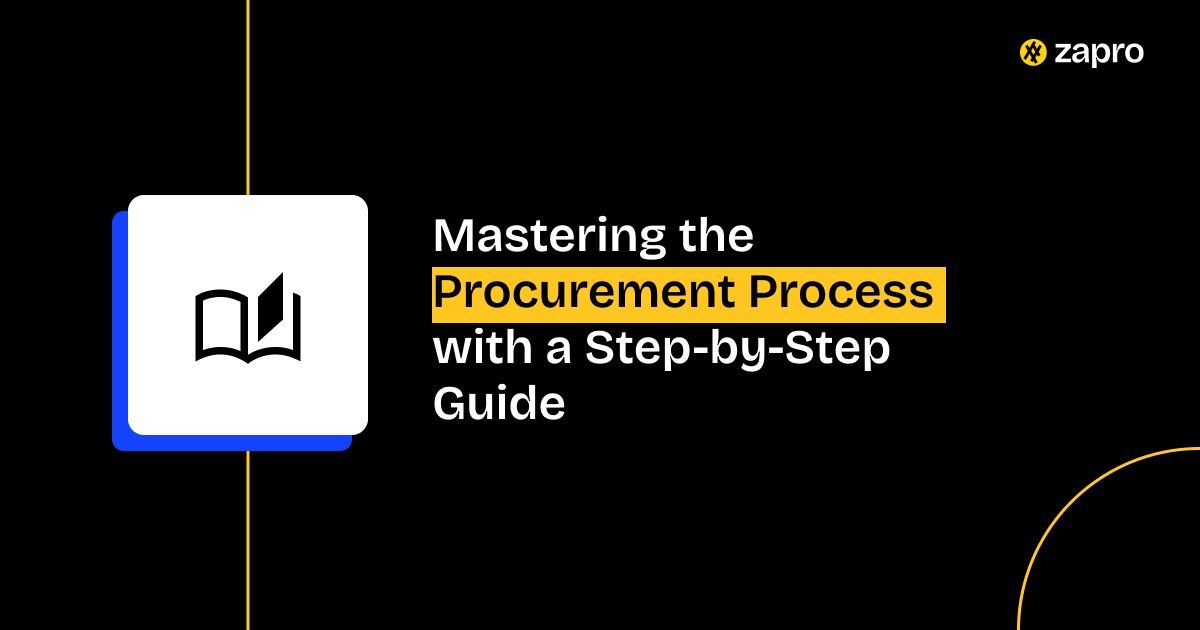
 Healthcare
Healthcare Financial Services
Financial Services Technology
Technology Venture Capitalist
Venture Capitalist Chief Procurement Officer
Chief Procurement Officer Chief Financial Officer
Chief Financial Officer